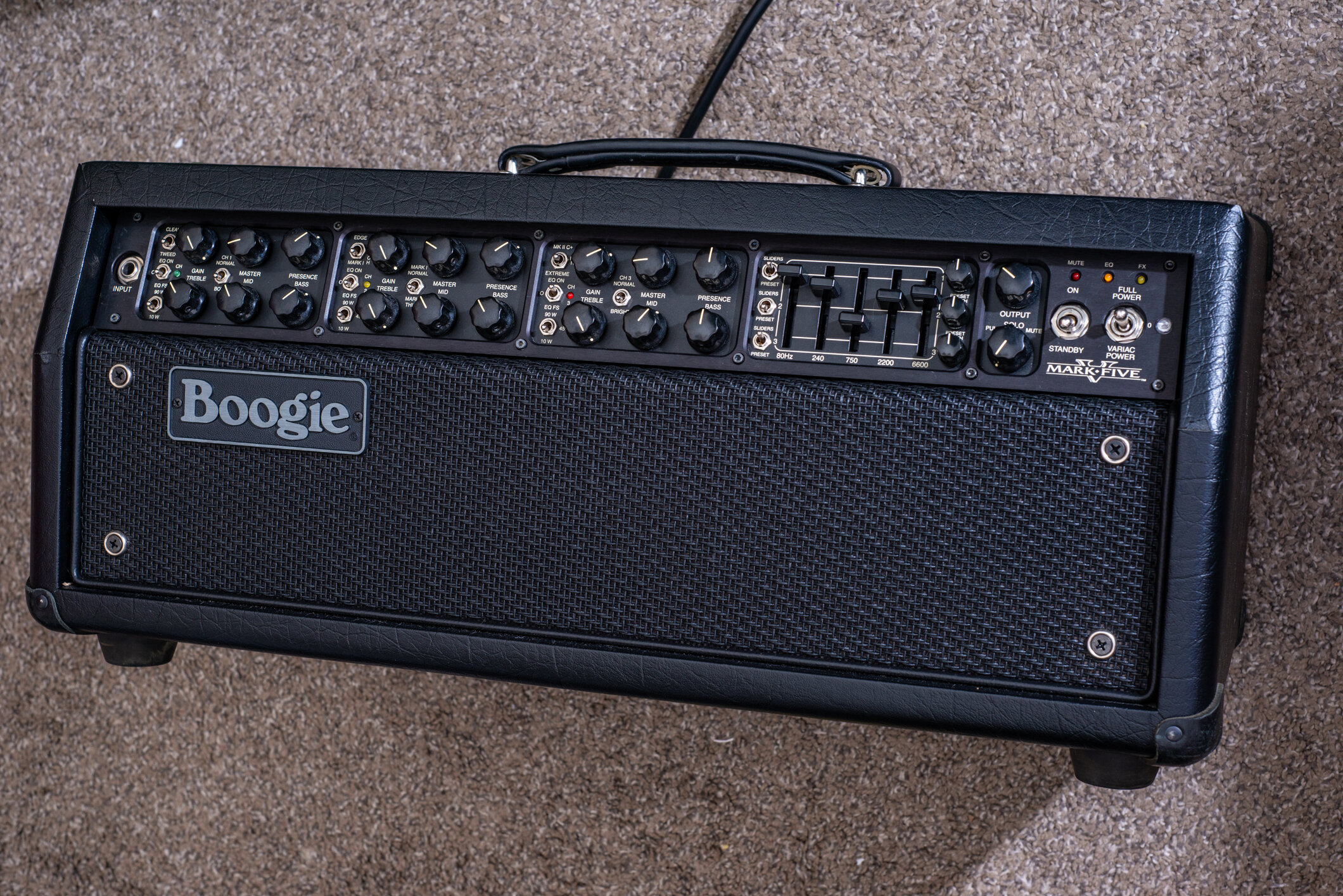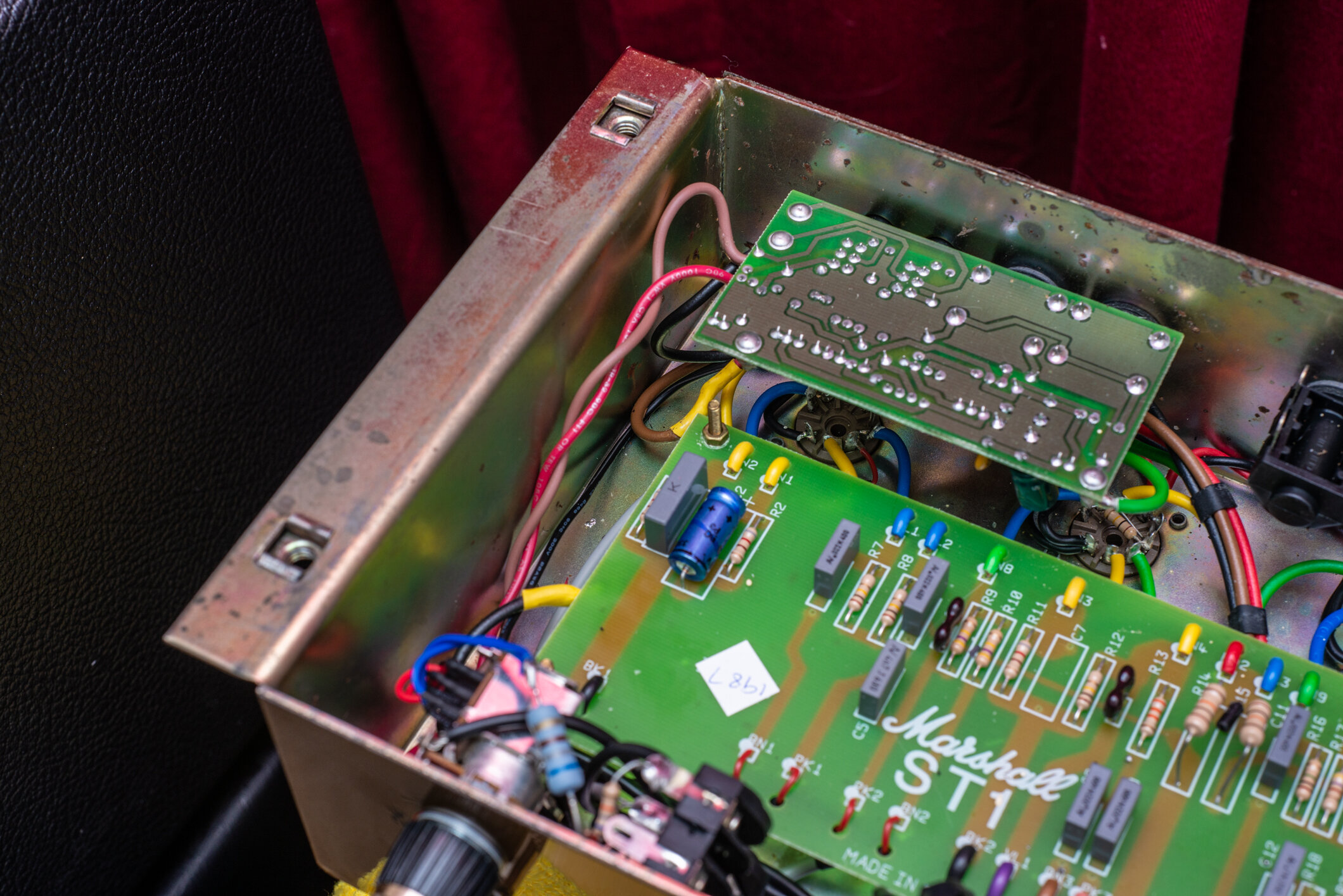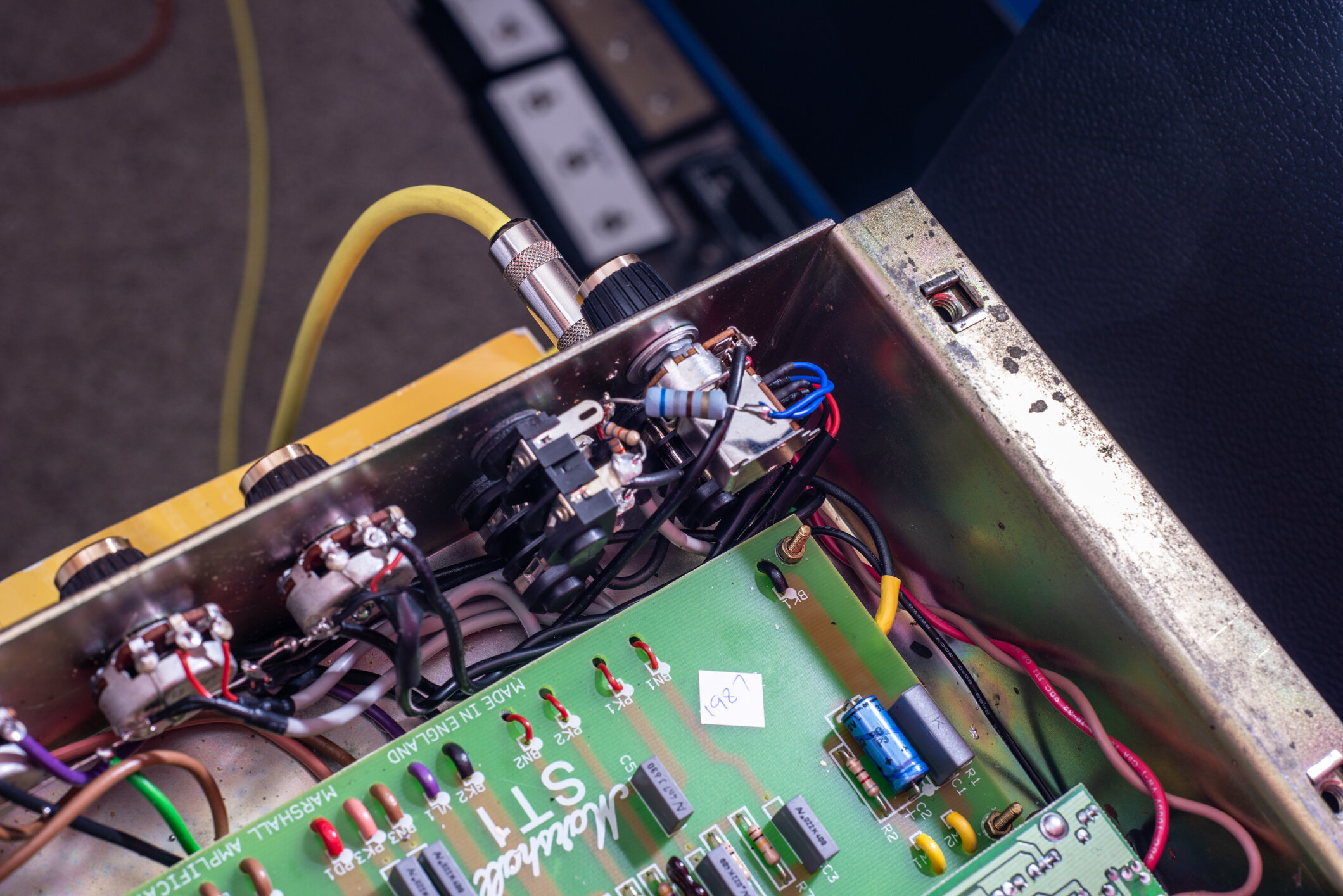I put in this order as soon as I saw the listing pop up on Guitar Center’s used listings. It was listed as a 2203x Reissue, which I’ve really wanted for a while, and the price was about half the going rate for one of those. The store called me to tell me that it was no a 2203, but instead a 2210 model. I verified the serial number was from 1986, making it likely to have the later version of the circuit like my beloved 2205, so I went for it anyway and figured worst case scenario it’d be an easy flip for a profit.
Disappointingly, the amp arrived with some serious damage to the headshell, with the top piece of wood with the handle cracked and splitting from the vertical sides at the finger joints. It tore the tolex there and was only held together by the rivets of the plastic corner pieces. On top of that, the spring reverb tank was totally trashed, the springs inside broken so badly they actually damaged the transducers inside as well beyond repair. Luckily, the amp itself worked and it even came with a nice set of SED Winged =C= EL34 power tubes (which I immediately removed and packaged away for later use).
I gave the store a call and they were very understanding and able to work out a partial refund deal for me. That should cover the cost of either a headshell repair/replacement and the spring reverb tank, though I’ll have to do the work myself, but that’s okay.
This amp is a blast though - it sounds incredible. Very interesting to me, but when it arrived I immediately set the controls exactly the same as my 2205. However, this 2210 sounds quite different - it’s much less bright, a bit thicker sounding with stronger lower mids. Both amps still excel at what they set out to do, and share the same core tone and feel, but it is interesting that my 2205 with the treble on “3” is about the same as this amp with the treble nearer to “7.”
Probably the hardest part about that now is it’s so hard to decide which of these two amps to keep. I thought this would be a slam dunk - sell the 100 watter since it’s louder, but now I’m finding it just as easy to dial in at studio volumes and has a different tone altogether. I’ll have to open them both up and see if any modifications have been performed. I suspect this 2210 has at least some upgrades done, since during this time it should’ve been equipped with 6550/KT88 power tubes (and my 2205 has a pair of these), but instead came with EL34’s and runs just fine with those tubes.
Still, deciding between two fantastic sounding JCM800’s is a good problem to have.










